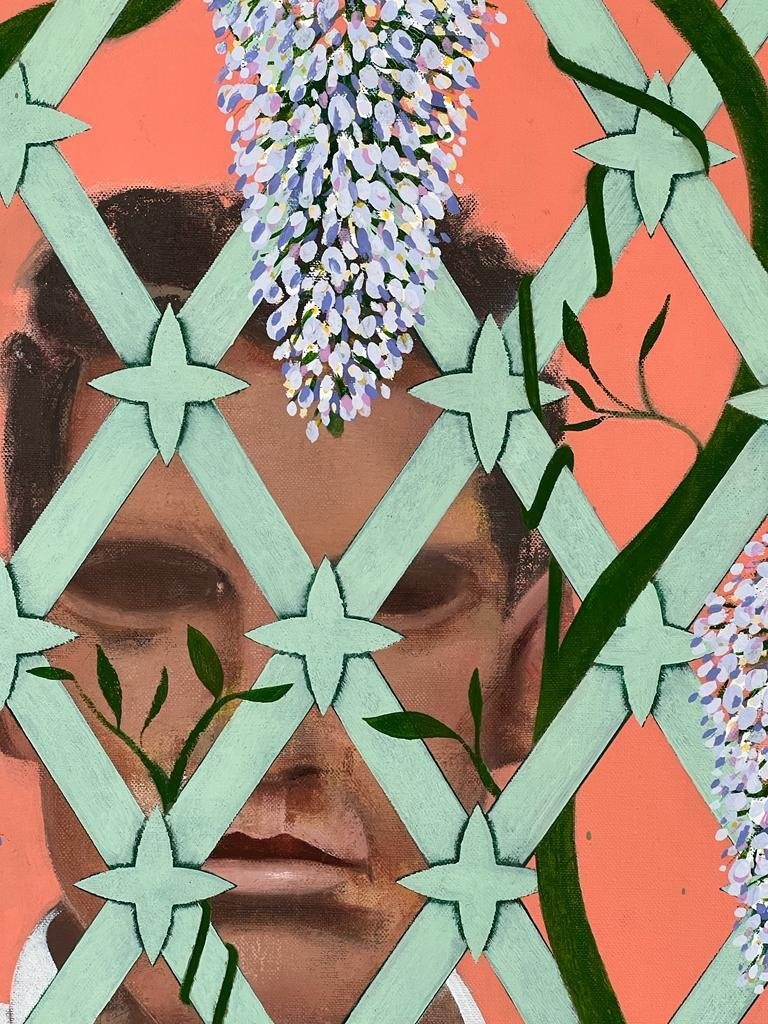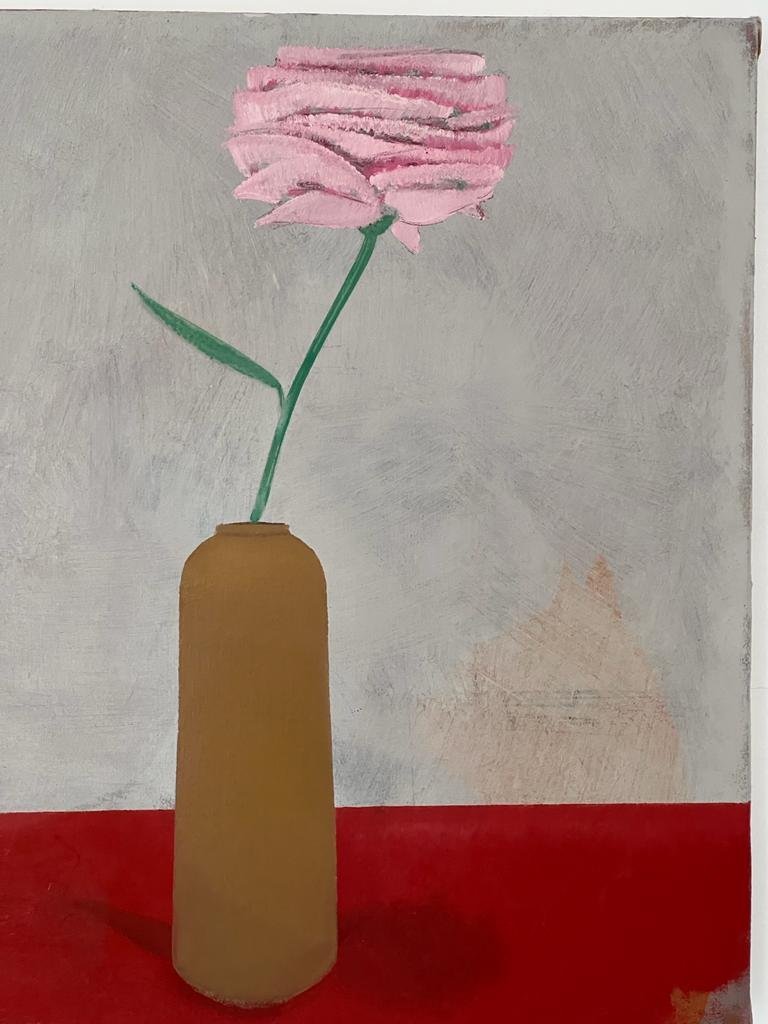Constantin Nitsche: Blauregen
9 July–17 September 2022, Marseille
The delightful uncertainty of the gaze
The contemporary world is so bombarded with images that the eye, over-solicited often does not look at them really any more. Between clichés of surface and visuals manufactured without we necessarily realize it (or tries to realize it: assumed and/or guilty passivity!), the eye does not operate necessarily any more the distinction very well.
Painting also taught us to be wary of the appearances and the facilities of reading. Constantin Nitsche's work, however, appears clear in every respect. Everywhere characters populate vast spaces, sometimes neutral, but more often landscapes or interiors retranscribed with a realism of a great precision, especially when it comes to motifs or decorative artifacts, including clothing.
Everything in these paintings is suspension but also impermanence. The revealed scenes, silent, are not definitively frozen: they appear as if put on pause the time - more or less long - that an event of which we will never know come to modify the balance at work. Sometimes impermanence even borders on evanescence, as when the figure seems partially dissolved on the surface: appearance or disappearance?
We will not know more; especially since between the absence of anecdotes, the perfectly smooth surface which deactivates any attempt of commentary and refusal to deliver the least clue of a psychological order, any narration is in fact proscribed and the revelation of a promised intimacy evaporates inexorably. Time and action seem to be so perfectly stopped, and therefore conducive to contemplative drift, that one almost forgets that the image is too perfect to be true.
For through the mixture of borrowings from reality and cinematographic inspirations that characterize his work - including technical ones with the analogy of the lateral traveling that can be perceived in some paintings - Constantin Nitsche engages in a real work of staging, a clever work of construction; the construction of a world with borrowings from his world, making the attempt of deciphering the image even more perilous and uncertain. The reference that comes to mind is that of the filmmaker Wes Anderson. But in his world everything is supported and overplayed, so much so that the "reality" of the action blossoms in a setting that is part of the décor, thus maintaining in the spectator a constant feeling of ambivalence as to the nature of what is being shown; the viewer with a constant feeling of ambivalence of ambivalence as for the nature of what is given to see; just as in the paintings of Constantin Nitsche for whoever accepts to look at them, and not simply to consume them as one swallows immediate images.
Whether they are from behind, in front or in profile, the characters also face images because they are contemplating something, including this impassive man with a curious empty look, who keeps his distance thanks to a subtly ornamented fence.
They are not the only "voyeurs". The painter is also a voyeur, the viewer too, who will try to unravel the mysteries of the painting without however succeeding so much he is assailed by the doubt distilled by this image too perfect to be "honest".
Constantin Nitsche's painting is offered as a reading of his time: that of a rigorous and critical eye which, in spite of its precision, opens on nothing else than the vast field of a delicious uncertainty.
Constantin Nitsche bio:



















